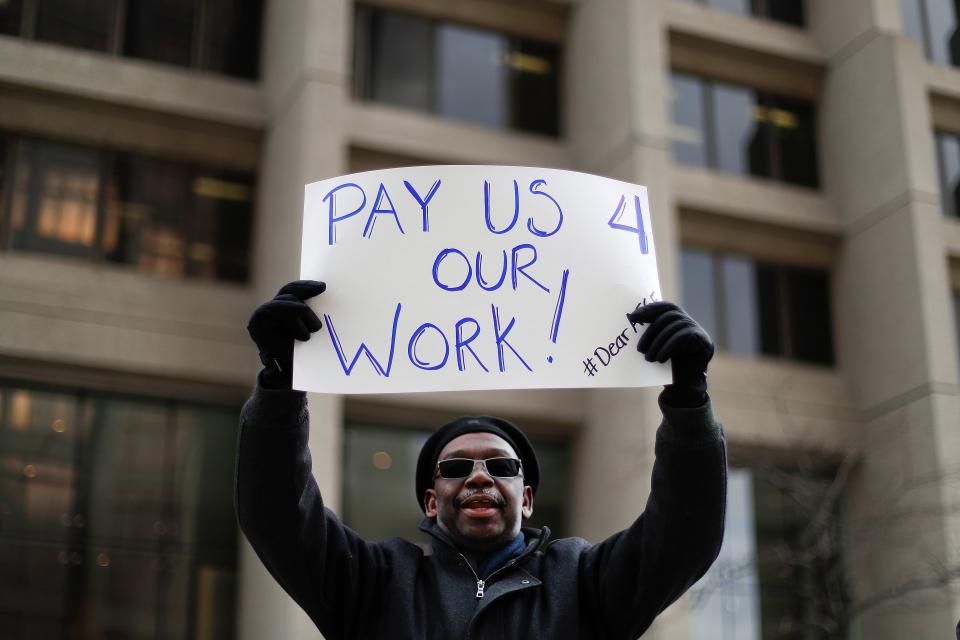Government shutdown 2019: Five ways it's costing you money
WASHINGTON – The partial government shutdown has not only left people without critical services and thousands of federal employees without a paycheck, it also is costing you money.
While estimates vary, according to the Committee for a Responsible Federal Budget, shutdowns overall tend to cost, not save, money.
The costs comes in many forms – money spent for work not done, lost revenue that has to be made up from other sources, expenses associated with planning for and executing a shutdown, and penalties the government pays for not making timely payments to vendors and states while agencies are closed.
Here are five ways the shutdown wastes taxpayers' – your – money:
Pay for no play
Of the 800,000 federal employees affected by the partial shutdown, about 380,000 have been placed on unpaid leave.
In the past, when a shutdown ended, those workers – and those critical employees who worked without pay – have been reimbursed for those days. So, that means at least three weeks of pay for which no work has been done.
After the 16-day complete federal shutdown in October 2013, the Office of Management and Budget issued a report estimating that 6.6 million workdays were lost. The total cost to pay the furloughed employees was about $2 billion, with total compensation costs reaching $2.5 billion.
“Employees not on the job could not conduct food, product and workplace safety inspections; prepare for flu season; process tax refunds or provide numerous other services,” the report said.

Lost revenue
Closed federal attractions, particularly the National Park Service, means lost revenue. As of last week, according to the National Parks Conservation Association, $6 million in fees have gone uncollected.
That, in essence, is wasted money because these are dollars that could be used to support park programs and maintenance.
In response to concerns about growing mounds of garbage and uncleaned bathroom facilities, the park service announced last week it would use revenue from entrance camping and parking fees to do some of this work.
That money normally would pay for park projects, and the National Parks Conservation Association criticized the move.
“Instead of working to reopen the federal government, the administration is robbing money collected from entrance fees to operate our national parks during this shutdown,” said Theresa Pierno, CEO of the parks conservation association.
Turning off, turning on
It takes time and planning – which means money – to shut down the federal government and to eventually bring it back to life.
Each agency formulates and then continually revises its shutdown plans, which takes time away from executing their primary missions.

The big picture
A federal government shutdown hurts the economy as a whole – which costs us all.
Economists estimated that the October 2013 shutdown shaved 0.6 percent from the fourth-quarter domestic product that year, taking about $24 billion out of the economy.
The Council of Economic Advisers estimated that the goings-on during that period – including the government shutdown – resulted in 120,000 fewer private-sector jobs during the first two week of October in 2013.
Check is in the mail
While the amount is not clear, the federal government is likely to owe interest penalties on late payments to contractors and to states if payments are not distributed in a timely manner.
The Prompt Payment Act requires that the government pay its bills within 30 days. The Cash Management Improvement Act requires that grants and funds for financial assistance programs be provided to the states on time.
This article originally appeared on USA TODAY: Government shutdown 2019: Five ways it's costing you money

